The Western Diamondback Rattlesnake is the most commonly encountered snake in the Phoenix area, and can be found anywhere where neighborhoods get close to native desert habitat. They make up the majority of snake sightings to our snake identification service, the Rattlesnake Solutions snake-relocation service, as well as snake sightings on social media websites. If you have seen a rattlesnake in your yard or on the trail, it was most likely a Western Diamondback Rattlesnake.
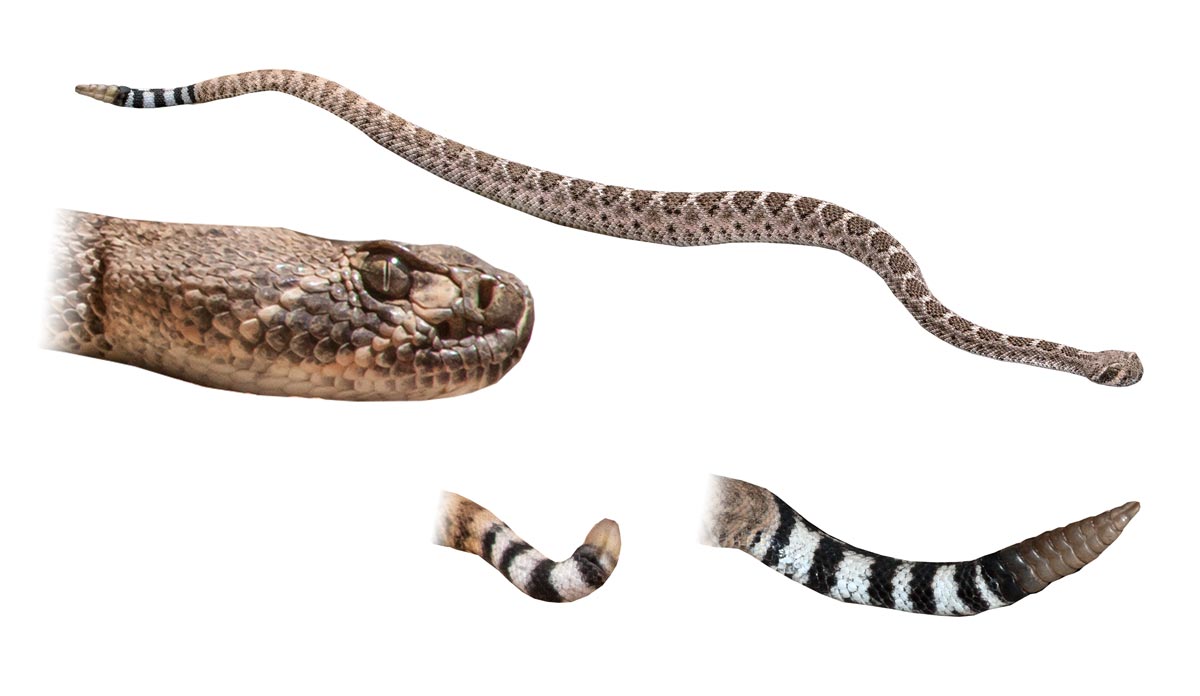
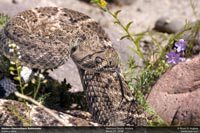
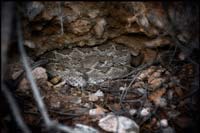
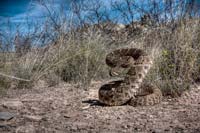
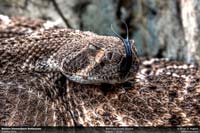
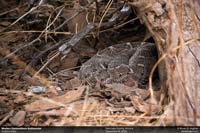
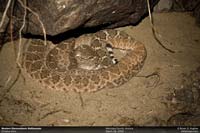
Size
The Western Diamondback Rattlesnake is the largest rattlesnake in Arizona. While they can reach lengths up to around 6' long in rare circumstances, in Arizona, a 4' size would be a very large adult, with some rare exceptions reaching the 5' mark.
When born, the Western Diamondback Rattlesnake is generally around 10 to 12 inches long, taking several years to reach adult size.
Color and Appearance
These heavy-bodied rattlesnakes are typicaclly grey, brown, tan, with some populations showing hints of rose or red. The color is typically not vibrant, and most often described as "brown" or "grey" by observers attempting to describe the snake without yet knowing what it is.
As the name suggests, the back of the snake is covered with a series of shapes that may be shaped as a diamond, but are more often a loose oval or rounded rectangle shape. The diamonds are typically darker than the surrounding body color, and outlined in a white, or lighter-colored outline. The sides of the body may have additional blotches but typically lack the light outlines found along the back. Black spots are often on scales throughout the body, giving a more generally "dirty" or inexact pattern. This pattern can fade towards the latter third of the body, sometimes disappearing completely or just leaving traces of black smudges along the back.
The face has a light-colored stripe extending from just in front of the eye to the mouth, just behind the eye, extending down and back to slightly behind the eye. There is a thinner light stripe behind the eye that extends to the back of the head, but may not be visible on some individuals.
The Rattle
The rattle is distinct and, considering the overall appearance of the snake and the stongly-contrasting black and white bands of the tail, quite visible. The rattle is typically a dusty yellow or tan color. The first segment to come from the body is black.
When born (all rattlesnakes are born live), a single segment is present, called a pre-button. Though it cannot yet make sound, it is quite visible. Often bright in appearance, standing out against the black and white tail bands, the snake is not shy about showing it and soundlessly shaking it. After the first shed skin, the pre-button gains a notch, now forming a full button. After each subsequent shed skin, a new segment is revealed from the end of the tail.
The rattle does not contain anything, but makes sound by contact of the loosely-interlocking segments. The material is hard keratin, similar to our fingernails. It can easily become brittle or damaged as the snake moves through rocks and is exposed to sun, so the rattle will break many times throughout the life of the snake. As with all rattlesnakes, the number of rattle segments does not indicate the age of the snake.
Identification
The most commonly-used method to identify the Western Diamondback Rattlesnake is by the banding on the tail, between the cloaca and rattle. This banding pattern is usually a highly-constrasting white and black, which stands out dramatically from the coloration and pattern on the rest of the snake. These white and black bands are generally displayed at a 1:1 ratio of white to black, with both colors appearing to be about the same width. However, this banding is highly variable, and and can be misleading if used as a single-point characteristic for identification.
When viewed closely, the Western Diamondback Rattlesnake can be differentiated from the similar-looking Mojave Rattlesnake by the scales found directly between the large eye scales on top of the head. The Western Diamondback Rattlesnake generally has 3 or more, while the Mojave Rattlesnake generally has 3 or fewer. This method of identification, however, is not particularly useful in most cases, as it requires closer observation than is advisable for most people. Remember, snakes can still sometimes strike and evenomate even after death, so do not approach to identify
Videos featuring this species:
- Dangerously Venomous
- Very Commonly encountered
- Avoid or relocate if found at a home
- Snake fencing very effective
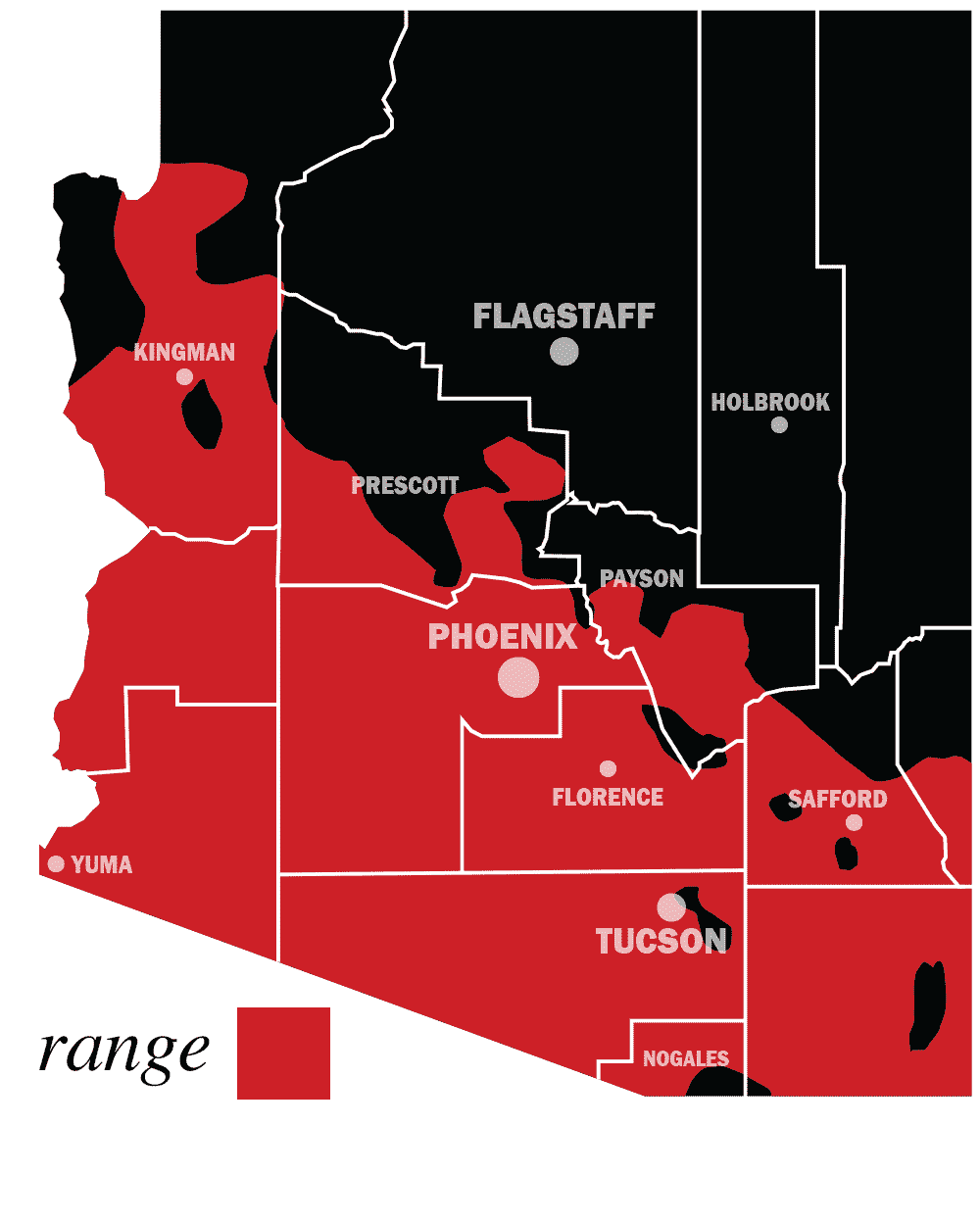
Alternate Common Names:
Coon-Tailed Rattlesnake
Often confused with:
Mojave Rattlesnake
Sonoran Gophersnake
Articles:
Western Diamondback Rattlesnake: The Most Common Snake in Phoenix